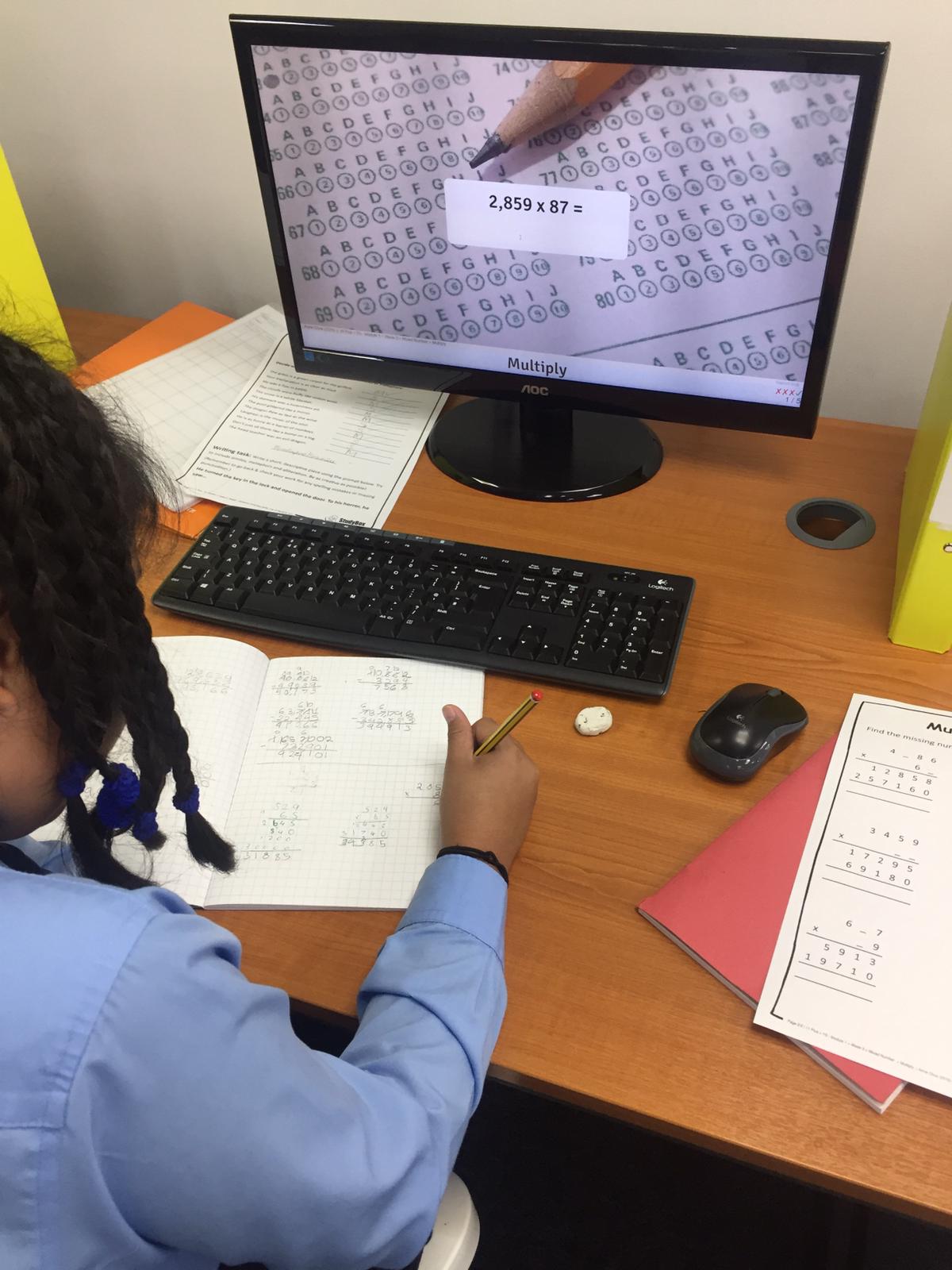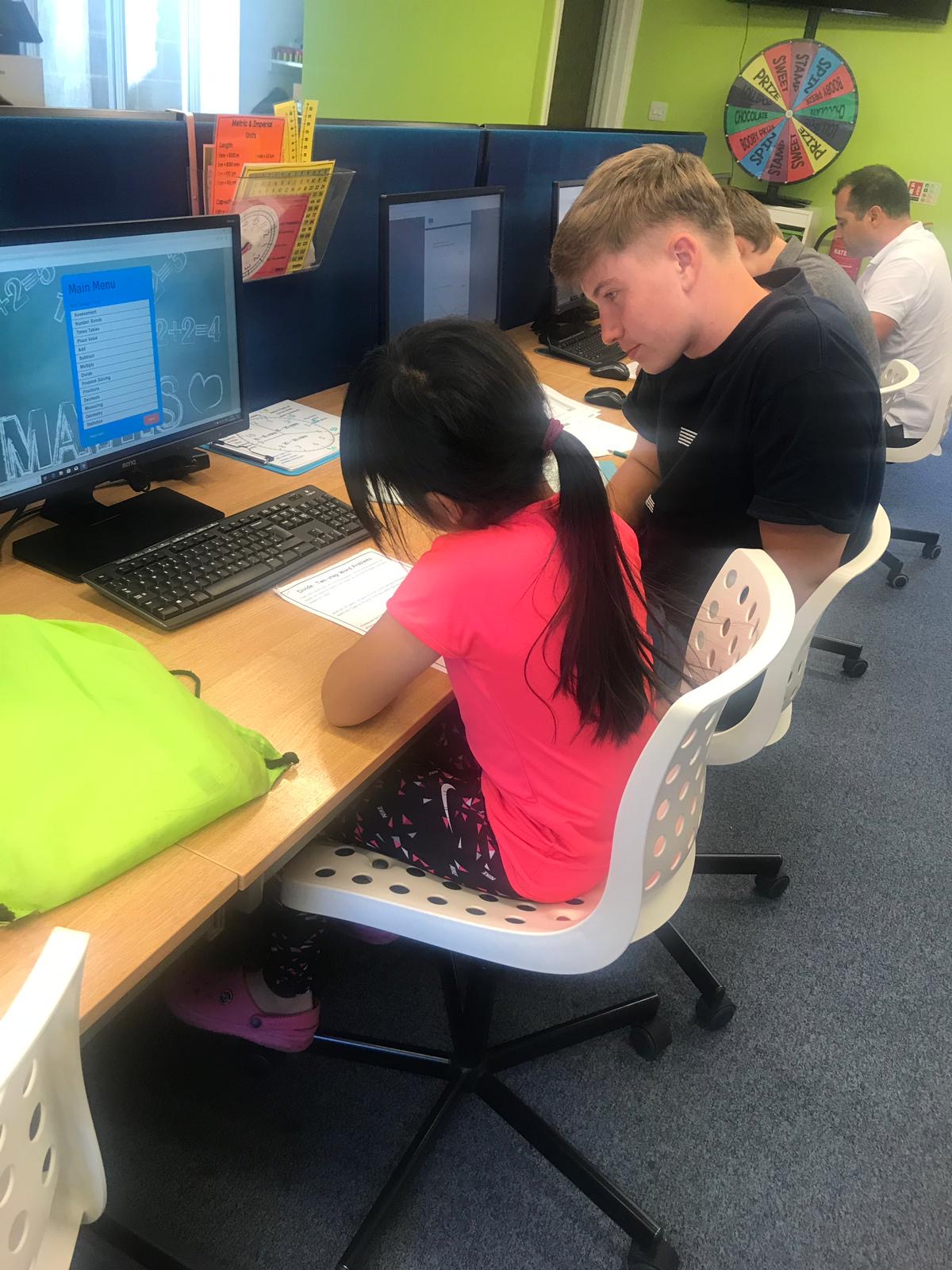3 ways for your child to practice mindfulness

Mindfulness and positivity goes a long way. Which is why it’s important as a parent to encourage children to practice mindfulness alongside education.
It is beneficial for a number of reasons, including keeping calm, remaining positive and organising thoughts. Implementing this technique with children will be beneficial for their education and learning.
Here are 3 ways for your child to practice mindfulness:
Positive mindset
- Help your child to have a can-do attitude in their daily life.
- Encouraging positive thinking and developing the right thoughts.
- Reducing stress by controlling thoughts and feelings.
- Talking to them about any issues that are bothering them.
Meditation
- Controlling your child’s way of thinking.
- Taking time out of your child’s busy routine to reflect upon their day.
- Engaging the self with deep breathing.
- Teaching them to analyse what went well and what could have gone better.
Extra-curricular
- Finding something that your child loves to do in their spare time.
- Having a break from education and school work.
- Reducing stress through hobbies, such as physical activity or arts and crafts.
- Not only improves upon skills, but takes away pressure from academia.
Mindfulness is a useful technique which has a number of benefits. It is a way of controlling and regulating thoughts, boosting positivity and self-reflection.
Encouraging children to practice mindfulness will benefit their education, so why not try implementing our 3 ways for your child to practice mindfulness.
It is a way of relieving stress and remaining positive during those stressful exams and assignments.
It is also important as a parent to practice mindfulness. If you demonstrate being mindful, your child will most likely learn from the parent’s behaviour.
3 ways to kick-start your child’s revision

Exam season is fast approaching, and whether it’s SATs, GCSEs or the 11+, your child will start preparation soon.
It’s normal for children, as well as parents, to worry about exams!
But with the right revision and preparation, revision has never been so easy…
Here’s 3 ways to kick-start your child’s revision:
Planning
- Mapping out the time before your child’s exams will provide an indication of how long there is for completing revision.
- You can make a timetable together and record the key exam dates.
- Try adding a schedule to the timetable, like how many hours to spend revision and on which days.
- Don’t forget to include study breaks on the timetable, too!
Create a study environment
- Dedicate a special place where your child can revise and complete schoolwork.
- Creating a quiet and secluded environment will ensure that there are no distractions.
- This means that information can be retained easily and work completed effectively.
- Make sure they have all the supplied needed for studying so they won’t have to get up and get distracted.
A healthy lifestyle
- Helping your child maintain a healthy lifestyle will benefit them when it comes to schoolwork.
- Setting a time for bed every night will create a routine and ensure they are not tired for a productive day’s work!
- A balanced diet also has an impact on the body and mind. This includes fruit, vegetables, fish, meat and carbohydrates. Nutritious breakfasts are also important in the lead up to and the morning of exams.
- Don’t forget to encourage them to drink lots of water, too!
Exam season doesn’t have to be daunting, and with the right planning and preparation your child will feel more confident.
3 ways to kick-start your child’s revision will help with their work ethic and organisation.
It’s not just about revision, it is also important to maintain a healthy lifestyle and have a peaceful setting to revise in.
3 effective ways to improve your child’s concentration

Understanding how children learn and memorise information can help us to improve their education.
The way that children’s brains are wired is completely different to adults, which is why children’s attention spans are typically shorter.
Have you ever wondered how you can improve your child’s attention span so that their focus can improve when learning?
Try our 3 effective ways to improve your child’s concentration:
Playing focus games
You can make learning fun by incorporating games into daily activities. Try playing card games like ‘Memory’ or puzzles like Sudoku or Crosswords, these will improve attention span as well as focus. If you take away electrical gadgets like smartphones and tablets it will be less distracting, allowing your child’s concentration to be solely on the activity.
Create a distraction-free zone
By creating a distraction-free environment, your child will have somewhere dedicated for studying and completing work. This is a space where they can focus on the task they are completing without being tempted by the TV, mobile phones or other distracting electronics. Create an environment that is comfortable and calming for your child so that it makes the tasks enjoyable. If they concentrate best by listening to calming music, then why not try putting on soft background music. Make sure everything that your child needs is accessible so they don’t have to get up and search for anything.
Set a routine
By creating a timetable for daily activities, your child will have a structure to follow and know what they need to complete. If there’s a set time for completing homework, having dinner and other activities like reading, it can help to program their mind so they are aware of what they need to get done. This will also help with time management and organisation!
You can help your child with their concentration skills a number of ways! Training children’s brains to focus is something that will benefit them throughout their life. Concentration can be improved through brain training games, creating a peaceful environment for completing tasks and setting a routine to follow.
3 ways to help your child at home with their work

As a parent, there are many things you can do at home to help your child with their school work.
If you’re wondering what you can do to improve education, why not try our 3 ways to help your child at home with their work:
Healthy Lifestyle
- Ensure your child is getting enough sleep. It’s recommended that children need between 8 and 12 hours of sleep every night.
- A healthy, balanced diet will improve the way your child functions. For example, calcium and Vitamin D helps strengthen bones and growth, iron is good for cognitive ability and Omega 3 helps the brain to function.
- Lots of fruit and vegetables are important, as well as meat, fish and wholegrains.
Routine
- Establishing a routine for your child will help them be organised and have structure in their day-to-day life.
- This can be making sure they pack a school bag the night before, completing homework the day it is set and having a regular bed time.
- Try setting a morning routine: enough time for having breakfast, brushing teeth and getting dressed. And an evening routine: set a time for completing homework, a set dinner time and time for winding down in the evening.
Education
- Reading with your child at home will improve vocabulary, imagination and pronunciation. You can read a few pages per night together. If they are confident reading alone, then try encouraging them to read a few pages of a book every night before bed.
- Complete homework together. You can teach them new concepts and provide any extra help when needed.
- Additional tuition. If there’s any subjects that are more challenging over others, why not consider after-school tuition? At StudyBox, we provide 1-1 support with tutors tailored to each individual student.
There are plenty of opportunities as a parents to help your child at home with their education.
Try our 3 ways to help your child at home: assisting with schoolwork, setting a routine to help time management and completing tasks, and maintaining a healthy lifestyle by getting plenty of sleep and having a healthy diet.
If your child needs any extra help in difficult subject areas, why not consider additional tuition with StudyBox?
Finding the right learning style for your child

Everyone learns differently.Which is why finding the right learning style for your child will help you to support and assist with their learning effectively.
As a parent, you can apply their individual style and use this method to help them learn!
Visual
- Learning by seeing.
- This learner benefits by looking at pictures and imagery.
- If your child is a visual learner, they may enjoy drawing or writing out notes. Anything visual, like examples or colourful notes, will help them to remember concepts and ideas.
Study tips:
- Create colourful notes for studying.
- Draw mind maps, graphs and pictures.
Auditory
- Learning by hearing.
- This means that learning through sounds and music.
- If your child learns best through talking aloud, they may be an auditory learner.
- Auditory learning can also involve music to help with schoolwork or listening to instructions.
Study tips:
- Playing music whilst your child is studying might help them to remember notes.
- Try talking out notes aloud to speed up the process.
- Creating songs about study notes may help your child memorise effectively.
Kinaesthetic
- Learning by doing.
- This person learns by touching and movement.
- Kinaesthetic learning includes being good at sports and physical activities.
- It also involves learning through hands-on activities.
Study tips:
- Try drawing out images or writing out notes for easier memorisation.
- You can act out scenarios with your child to help them revise.
- Try to create learning games to make the activity fun.
Logical
- Learning through logic.
- This learner understands through reasoning and numerical problem solving.
- Understanding the logical reason behind ideas helps this type of learner make sense of things.
- Logical learners usually learn best by following a set of rules or instructions.
Study tips:
- Create word problems to help your child make sense of the question.
- Problem solving, like test and equations, is the best way to test material.
Social
- Learning by talking and interacting.
- The person learns by communicating and working in groups.
- A social learner will benefit from role playing, working on projects or communicating with others.
Study tips:
- Organising study groups will help a social learner to share ideas and work collaboratively.
- Try engaging with your child by talking through concepts and material.
- You can have a discussion or debate and challenge them, helping to form arguments and remember key points.
Identifying how your child learns best can help you to assist them with learning the most effective way possible. For example, if they are a visual learner, drawing out mind maps with revision notes can help them by seeing the information in front of them.
They can apply the way they learn to any situation by adapting the material to their learning style. This will stay with them for life, as they can learn effectively through using their own, unique method with the task they are set.
For other learning techniques, like engaging children with their learning, read more on our blog.
Improving your child’s vocabulary at home

Improving your child’s vocabulary at home will help them to succeed in future!
Encouraging your child to expand on their vocabulary from a young age is essential.
It will help them to communicate effectively and make a difference with school work.
Having an expansive vocabulary is beneficial for writing, exams and general communication.
As a parent, you can improve your child’s vocabulary at home! Here’s how:
Reading for pleasure
- Encourage your child to record a list of new words they’ve found.
- Revisit those words weekly.
- They can use the new words in their day-to-day vocabulary, helping them be remembered.
Audiobooks/educational programmes
- Audiobooks are an effortless way way to educate your child!
- Hearing how new words sound will help with pronunciation and memorising them.
- Programmes can be beneficial with learning new vocabulary, too.
- Seeing how the words are pronounced whilst hearing them helps with remembering them.
Spelling lists
- Create spelling lists to constantly teach new words.
- These can be daily or weekly to implement new vocabulary.
- Going over the misspelt words will help your child with memorisation.
Regularly teaching new words
- Try teaching your child a new word every week, or even every day.
- Use this word throughout the day/week and encourage them to use it in a sentence.
- You can find new words in a dictionary or use a website/app for generating them.
Playing word games
- There are numerous word games that can improve vocabulary.
- Board games, like Scrabble, or apps like ‘7 Little Words’ are a fun way to build up useful keywords!
- You can make up games to play, like seeing how many synonyms you can make from a word.
- For example, take the word ‘hungry,’ you can make ravenous, famished, starving, peckish, and so on…
There are endless ways for improving your child’s vocabulary at home.
Using exciting vocabulary when having a conversation, playing word games and encouraging reading for pleasure are just a few ways to do this.
A wide vocabulary has numerous benefits, so why not expand on language from a young age!
Subtracting fractions in 3 simple steps

Fractions are a challenging subject to grasp in maths. Helping children with subtracting fractions doesn’t have to be a difficult task though…
Follow our top tips on subtracting fractions in 3 simple steps!
1. Basic rules:
- The top number is called the numerator.
- The bottom number is called the denominator. This can be remembered as ‘d’ stands for denominator and down, as it’s at the bottom.
- Whatever is done to the denominator, must be done to the numerator.
2. Subtracting fractions with the same denominators
- As the denominators are the same, all that needs to be done is subtracting the numerators.
Example:
2/3 – 1/3
2 – 1 = 1
= 1/3
3. Subtracting fractions with different denominators
- The first step is finding the common denominator of the fractions being subtracted.
- This means that the bottom numbers need to be the same,
- To do this, find a number that both bottom numbers go into – a multiple of that number.
- For example, if the denominators are 4 and 8, both of these are a multiple of 8.
- It’s important to remember that whatever is done to the denominator, must be done to the numerator.
Example:
7/8 – 1/4 (Make the denominators the same)
7/8 – 1/8 (Do the same to the numerators)
1 x 2 = 2
7/8 – 2/8
Now subtract the numerators.
7-2 = 5
= 5/8
Top tips:
- Try drawing out the equations so it can be visualised. You can draw it like a pie:
 so this represents 1/4
so this represents 1/4
 and this is 1/3
and this is 1/3
- Or try asking it as a word problem.
- For example, Jessica has 1/3 of a chocolate bar. She gives her brother 1/2 of this. How much of the chocolate bar does she have left?
Subtracting fractions in 3 simple steps has never been easier!
Firstly teach your child the basic rules, labelling the numerator and denominator.
When the denominators are the same, the numerator simply has to be subtracted to get the answer.
When the denominators are different, a multiple of both denominators needs to be found.
Once this is complete, the same must be done to the numerator. Finally, subtract the fractions!
For additional help with subtracting fractions, click here.
If you are interested with other maths activities, like teaching times tables, find out more here.
Helping children with their spellings

The English language can be challenging to grasp, especially for children learning how to spell. Helping children with their spellings doesn’t have to be difficult though!
Try these tips for making spelling that little bit easier for you child.
Learning letter patters
- I before E except after C. The letter i usually comes before e in a word, however there are a few exceptions to this rule, like seize, weird, science…
- It can be useful to teach children common word endings (called suffixes). Teaching the common word endings, like “-een” “-ough” “-tion” “-ue” “-cian” will help children to remember the spellings more easily.
- Some words don’t follow any rules or patterns so they have to be memorised, for example the b in ‘subtle’ is silent.
- Some double letters can’t be heard, like ‘accommodation’ and ‘disappoint,’ so learning the spellings for these is useful.
- Homonyms are words that sound the same but have different meanings, like ‘your’ and ‘you’re.’ These must be learnt as two separate meanings, to avoid confusion. The apostrophe in ‘you’re’ stands in place for ‘are,’ so this is a different meaning to the direct address using ‘your.’
Top tips:
- Reading: reading allows spelling to be learnt easily without realising, as well as improving vocabulary.
- Mnemonics: mnemonics involves using imagery or patterns, which ca help to remember spellings. Try learning acronyms, like ‘because’ can be remembered as as ‘Big Elephants Can’t Always Understand Small Elephants’, or the word ‘necessary’ has one c and two s’, which can be remembered by comparing it to a shirt, which has one collar, one c, and two sleeves, two s’.
- Spelling lists: create a new spelling list every week and test your child on it. You can make this fun by creating themed spelling lists, for example one on seaside-related spellings. Writing out the spellings over and over again, especially the incorrect ones, will help with memorising and perfecting them. It may be beneficial to keep a list or notebook to record all the spellings that have been learnt, then you and your child can return to the list to recap.
- Sounding out words: sounding out difficult words can help to break them down when spelling them, like February can be broken down into Feb-ru-ary, or Wednesday can be Wed-nes-day.
Helping children with their spellings has never been easier. Learning spelling patters and rhymes allows certain spellings to be remembered with ease. For some tricky spellings, there is no pattern, like words with silent letters – so these ones have to be memorised. Testing your child on their spellings by giving them weekly spelling tests will help them to remember spellings and letter patterns. For those tricker spellings, make a note of them and go through them together until they are perfected!
Click here for a list of challenging spellings to test your child on.
3 ways to engage children with learning

Keeping children’s focus and maintaining their full attention can be challenging when it comes to learning. This is because not all children will be motivated in every subject they do. This is why trying a range of techniques can be useful for maintaining interest with the topic being taught.
Here are 3 ways you can engage children with their learning:
Monitoring your child’s progress
Going through work with your child that they are currently working can help keep on track with their progress. Perhaps try talking to them about their day at school. Ask questions like:
- What did you learn?
- What did you think about the topic?
- Did you find it challenging or easy?
Anything they struggle with you can recap together. This will help your child to understand the subject as well as reflect upon their learning.
As well as reflecting on the challenging material, ask them what their favourite subject(s) are. You can encourage and motivate them in what inspires them, too!
Rewarding efforts with positive encouragement
Children are constantly learning and like to be rewarded when they’ve been working hard. Helping them recognise that they are progressing with learning and doing well will encourage them in education.
Rewarding can be given in many forms, either something tangible like a treat or in verbal praise, maybe an activity or day out.
These rewards can also vary depending on what has been achieved, for example verbal praise can be given when they have aced a spelling test. Something larger, like a fun day out can be for achieving top marks in an exam or a positive report card.
Different learning approaches
Discover whether your child learns best through auditory, kinaesthetic or visual learning. Auditory learning concerns learning through hearing, whether it’s listening to music which aids the learning process or repeating study notes aloud. Kinaesthetic learning is learning by doing, this could be acting out something or creating something, like colour coded notes. Visual learning when the learner helps by seeing what is being taught. This type of learner can write out notes, create a poster or draw.
Knowing how your child learns best is a step towards engaging them with learning. Everyone has a unique way of learning so identifying how your child learns most effectively will make learning fun and achievable. Keeping on track with their learning by knowing what they are being educated in and asking them how they feel about the material. This will help to identify which areas they need help in and offer positive encouragement to reward when they are doing well.
If you’re looking for other strategies to help with your child’s learning, like how to mitigate your child, read more on our blog here!
If you’re interested in the 3 ways to engage children with learning, read more about learning engagement theories here.
6 ways to help motivate your child

Motivating your child with learning and education doesn’t have to be a challenge. There are many ways parents can help their children stay on track with school work and learning, through monitoring progress, positive encouragement and being supportive.
Here are 6 to help motivate your child throughout their learning:
-
Organisation
- Pack a schoolbag the evening before.
- Complete homework the day it is set.
- Keep a diary or calendar of important dates.
- Create a study timetable.
- Create a list of tasks to be completed.
-
Punctuality
- Establish a routine. Try setting a time for completing homework, a time for dinner and a strict bedtime schedule.
- Plan ahead.
- Focus on a goal or objective to complete e.g. achieving predicted grades.
-
Reading
- Reading for pleasure expands vocabulary,
- Ir enhances creativity.
- It improves spoken and written English.
-
Study skills
- Complete past papers.
- Learn how to process and organise information.
- Prioritise tasks in order of importance.
-
Knowing important dates
- Make a list of important dates.
- Write dates somewhere visible to be reminded of them.
- Work towards the important dates allowing time to be managed effectively.
-
Private tuition
- Specialised tutors can assist in areas children need help in.
- Work towards goals together, whether it’s GCSEs, SATs or the 11+.
- Lessons tailored to the individual helping to stay on track and be motivated to learn.
Trying different approaches to motivate your child with learning is good for keeping on track with academic progress. For ideas on how to make learning fun for children, look at our blog here.
Read more about science-based approaches on motivating children here.
